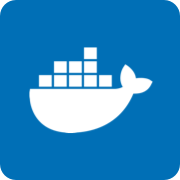Docker 17参考手册
引擎 | Engine
创建基本映像(引擎) | Create a base image (Engine)
大多数Dockerfiles从父映像开始。如果您需要完全控制图像的内容,则可能需要创建基本图像。以下是区别:
- 一个父映像是你的形象是基于图像。它
FROM指向Dockerfile中指令的内容。Dockerfile中的每个后续声明都会修改此父图像。大多数Dockerfiles从父映像开始,而不是基本映像。但是,这些术语有时可以互换使用。
- 一个基本图像要么不具有
FROM线在其Dockerfile,或具有FROM scratch。
本主题向您展示了创建基础图像的几种方法。具体的过程将在很大程度上取决于你想打包的 Linux发行版。我们在下面有一些例子,并鼓励您提交拉取请求以提供新的请求。
使用tar创建一个完整的图像
一般来说,您需要从一台运行您希望打包为父映像的发行版的工作机器开始,不过对于像 Debian 的 Debootstrap 这样的工具来说,这并不是必需的,您也可以使用它来构建 Ubuntu 映像。
它可以像创建 Ubuntu 父图像一样简单:
$ sudo debootstrap xenial xenial > /dev/null
$ sudo tar -C xenial -c . | docker import - xenial
a29c15f1bf7a
$ docker run xenial cat /etc/lsb-release
DISTRIB_ID=Ubuntu
DISTRIB_RELEASE=16.04
DISTRIB_CODENAME=xenial
DISTRIB_DESCRIPTION="Ubuntu 16.04 LTS"在 Docker GitHub Repo 中有更多用于创建父图像的示例脚本:
- BusyBox
- 在Debian / Ubuntu 或 CentOS / RHEL / SLC /等上的 CentOS / Scientific Linux CERN(SLC)。
- Debian/Ubuntu
使用scratch创建一个简单的父图像
您可以使用 Docker 的保留最小图像scratch作为构建容器的起点。使用scratch“图像”信号构建过程,您希望其中的下一个命令Dockerfile成为图像中的第一个文件系统层。
当scratch出现在集线器上的 Docker 存储库中时,您无法将其拉出,运行或标记具有该名称的任何图像scratch。相反,你可以参考你的Dockerfile。例如,要使用scratch以下命令创建最小容器:
FROM scratch
ADD hello /
CMD ["/hello"]假设您从Docker GitHub示例C源代码构建了“hello”可执行示例,并且使用该-static标记编译了该示例,则可以使用以下命令构建此 Docker 映像:docker build --tag hello .
注意:由于 Docker for Mac 和 Docker for Windows 使用 Linux VM,因此必须使用 Linux 工具链编译此代码,以最终形成 Linux 二进制文件。不用担心,您可以快速下载 Linux 映像和构建环境并在其中构建:
$ docker run --rm -it -v $PWD:/build ubuntu:16.04
container# apt-get update && apt-get install build-essential
container# cd /build
container# gcc -o hello -static -nostartfiles hello.c然后,您可以使用以下命令运行它(在 Linux,Mac 或 Windows 上): docker run --rm hello
本示例将创建教程中使用的 hello-world 图像。如果你想测试它,你可以克隆图像回购。
更多资源
有更多的资源可以帮助你写你的Dockerfile。
-
Dockerfile有关参考部分中可用于a的所有说明的完整指南。
- 为了帮助您编写清晰,可读,可维护的文档
Dockerfile,我们还编写了Dockerfile最佳实践指南。
- 如果您的目标是创建一个新的官方存储库,请务必阅读Docker的官方存储库。
图像,基础图像,例子
引擎 | Engine相关

Docker 是一个开源的应用容器引擎,让开发者可以打包他们的应用以及依赖包到一个可移植的容器中,然后发布到任何流行的 Linux 机器上,也可以实现虚拟化。容器是完全使用沙箱机制,相互之间不会有任何接口。
| 主页 | https://docker.com/ |
| 源码 | https://github.com/docker/docker |
| 版本 | 17 |
| 发布版本 | 17.06 |
 加载中,请稍侯......
加载中,请稍侯......